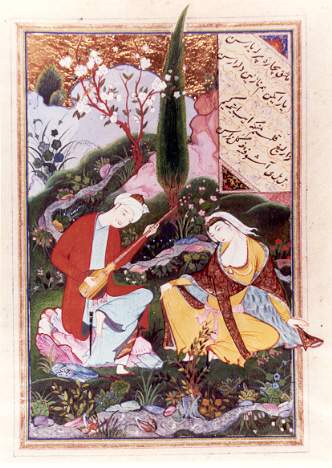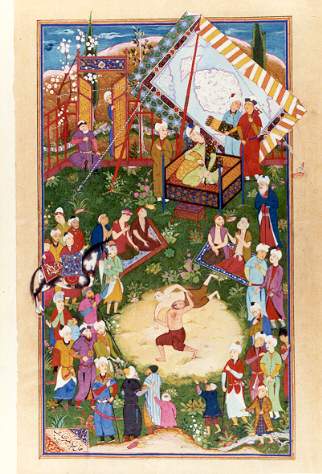Tajik/Persian miniature painting
is an ancient art, with its origins in the cultures of Persia and the
Indian sub-continent. Originally used to illustrate classic texts, folk
tales and epic poems, it gradually evolved into a unique art-form unto
itself, with its own "old masters" and different stylistic schools.
Unlike European art of the Renaissance and after,
Tajik/Persian miniature made no attempt
at realism, perspective or sense of scale. Their stories are told on a
flat plane, without concern for light source, anatomy or even human emotion.
This work is completely narrative in character,
telling its tales in symbolic ways through the use of representative
or iconic figures rendered in minute detail. Tajik/Persian miniature
paintings are "read" from right to left, as Arabic calligraphy is written,
and usually from bottom to top... from the earth and sea to the heavens.
It requires a different approach to understanding
than European art. One must examine each item in the composition very carefully
- these symbols were not put there just for decoration. Every element
is part of the story, "from the fish in the sea to the moon above". The
leaves on a tree may be as important as the fold of a garment of the sword
of a conqueror.
The enjoyment of this work comes in the "reading"
of each small gem of art, of learning the tale that it tells, of recognizing
the clues that the artist has given you, of fantasizing a bit into an
exotic past in a fabled land.
Masterpieces of Tajik/Persian miniature painting
can be seen in most of the world's great museums, and it is indeed fortunate
that this artistic heritage is still with us, that young artists are still
learning from the masters, so that we may continue to enjoy this unique
art-form. |











